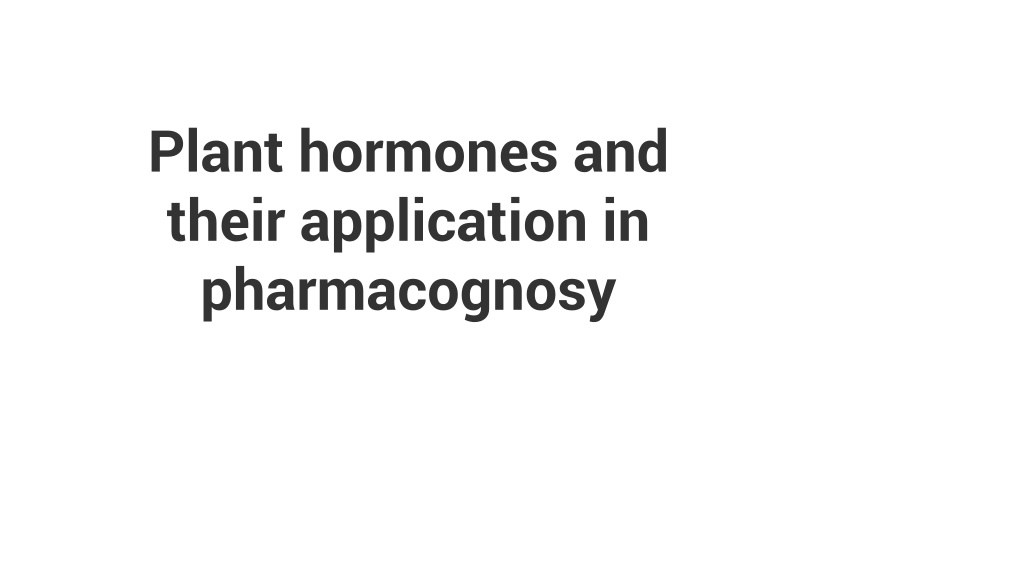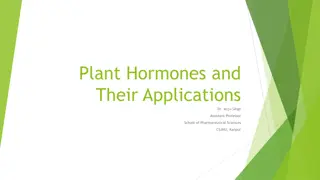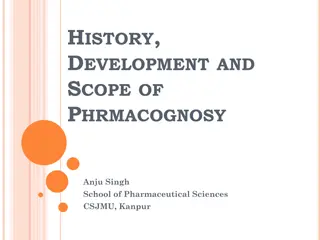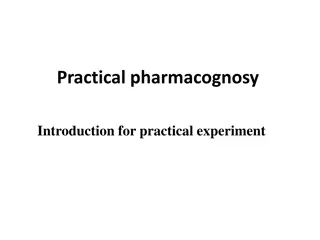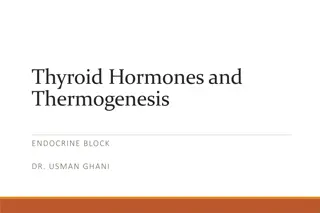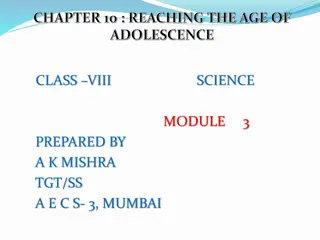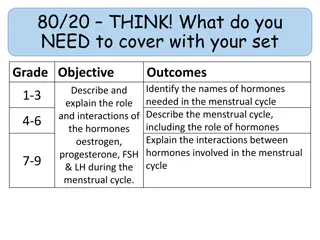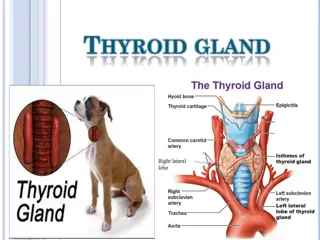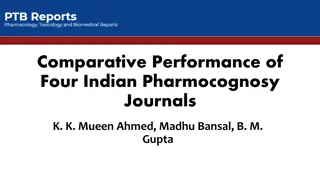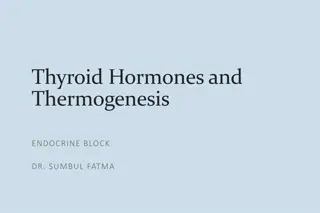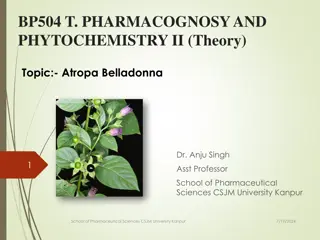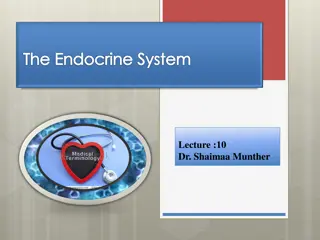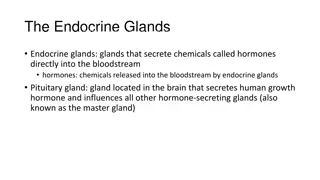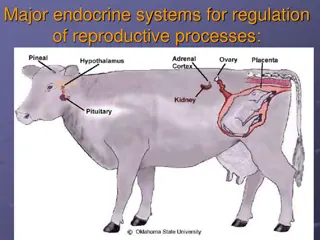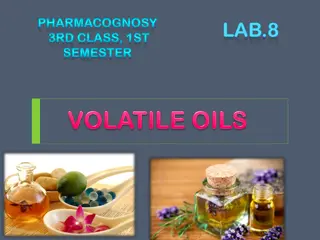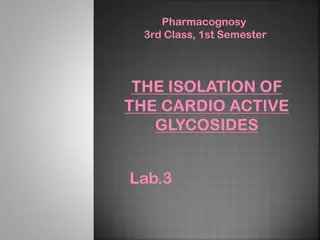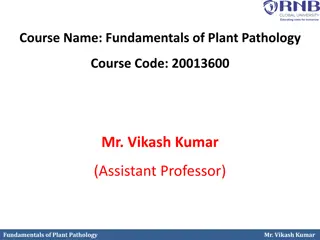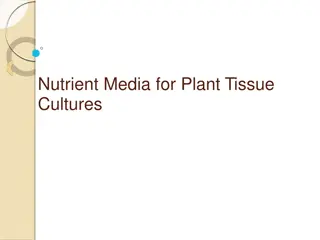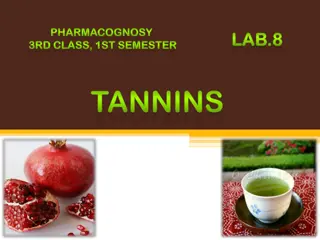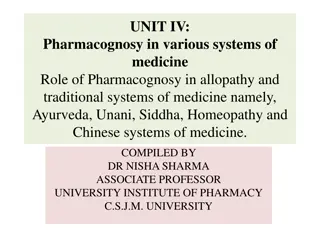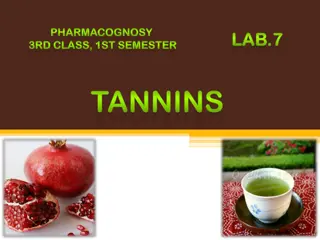Understanding Plant Hormones and Their Role in Pharmacognosy
Plant hormones, also known as phytohormones, are essential chemical compounds in plants that regulate various developmental processes. They include auxins, gibberellins, cytokinins, ethylene, and abscisic acid, each with specific functions in growth, reproduction, and response to environmental stimuli. Synthetic plant hormones are used in controlled crop production. These hormones play a crucial role in plant growth, influencing activities like cell division, flowering, seed formation, and dormancy. Understanding their classification and functions is key to leveraging their potential in pharmacognosy.
Download Presentation

Please find below an Image/Link to download the presentation.
The content on the website is provided AS IS for your information and personal use only. It may not be sold, licensed, or shared on other websites without obtaining consent from the author. Download presentation by click this link. If you encounter any issues during the download, it is possible that the publisher has removed the file from their server.
E N D
Presentation Transcript
Plant hormones and their application in pharmacognosy
Plant hormones Plant hormones or Phytohormones are chemical compounds present in very low concentrations in plants. They regulate plant development, growth, longevity and reproductive processes. Here, let s look at the structure and functions of different phytohormones like auxins, gibberellins, cytokinins, ethylene and abscisic acid.
Plants need sunlight, water, oxygen, minerals for their growth and development. These are external factors. Apart from these, there are some intrinsic factors that regulate the growth and development of plants. These are called plant hormones or Phytohormones .
Plant hormones are chemical compounds present in very low concentration in plants. They are derivatives of indole (auxins), terpenes (Gibberellins), adenine (Cytokinins), carotenoids (Abscisic acid) and gases (Ethylene). These hormones are produced in almost all parts of the plant and are transmitted to various parts of the plant. They may act synergistically or individually. Roles of different hormones can be complementary or antagonistic. Hormones play an important role in the processes like vernalisation, phototropism, seed germination, dormancy etc. along with extrinsic factors.
Synthetic plant hormones are exogenously applied for controlled crop production Charles Darwin first observed the phototropism in the coleoptiles of canary grass and F.W. Went first isolated auxin from the coleoptiles of oat seedlings.
What are the main functions of plant hormones? Plant hormones control all the growth and development activities like cell division, enlargement, flowering, seed formation, dormancy and abscission. Based on their action, plant hormones are categorised into two categories: Plant Growth Promoters Plant Growth Inhibitors
Functions: Cell elongation of stems and roots Apical dominance, IAA in apical bud suppresses the growth of lateral buds Induces parthenocarpy i.e. development of fruit without fertilisation e.g. in tomatoes Prevents premature fall of leaves, flowers, fruits Useful in stem cuttings and grafting where it initiates rooting Promotes flowering e.g. in pineapple 2,4-D is widely used as a herbicide to kill undesirable weeds of dicot plants without affecting monocot plants Helps in cell division and xylem differentiation
Gibberellins Hormone There are more than 100 gibberellins (GA1, GA2, GA3 ..) that are known. They are acidic in nature. These are found in higher plants and fungi.
Functions: Promotes bolting, i.e. sudden elongation of internodes just before flowering in rosette plants like cabbage, beet Delays senescence Induces parthenocarpy Elongation of the stem and reverses dwarfism Induces maleness in certain plants like cannabis Induces the formation of hydrolytic enzymes such as lipase, amylase in the endosperm of germinating cereal grains and barley seeds Breaks seed dormancy
Cytokinins Hormone Cytokinins play an important role in cytokinesis process. Cytokinins are naturally synthesised in the plants where rapid cell division occurs e.g. root apices, shoot buds, young fruits, etc. Movement of cytokinins is basipetal and polar. Natural: Zeatin (corn kernels, coconut milk), isopentenyladenine Synthetic: Kinetin, benzyladenine, diphenylurea, thidiazuron
Functions: It promotes lateral and adventitious shoot growth and used to initiate shoot growth in culture Helps in overcoming apical dominance induced by auxins Stimulate the formation of chloroplast in leaves Promotes nutrient mobilisation and delay leaf senescence
Functions: Induces abscission of leaves and fruits Inhibits seed germination Induces senescence in leaves Accelerates dormancy in seeds that is useful for storage purpose Stimulates closure of stomata to prevent transpiration under water stress
Ethylene Plant Hormone It acts as a growth promoter as well as an inhibitor. Occurs in gaseous form. It is synthesised in the ripening fruits and tissues undergoing senescence. It regulates many physiological processes and one of the most widely used hormones in agriculture.
Functions: It hastens the ripening of fruits Controls epinasty of leaves Breaks seed and bud dormancy Stimulates rapid elongation of petioles and internodes Promotes senescence and abscission of leaves and flowers Induces root growth and root hair formation thereby increasing the absorption surface Stimulates femaleness in monoecious plants Apical hook formation in dicot seedlings Other than the main 5 hormones, there are other hormones too that affect the plant s physiological processes, e.g.brassinosteroids, salicylates, jasmonates, strigolactones, etc.
